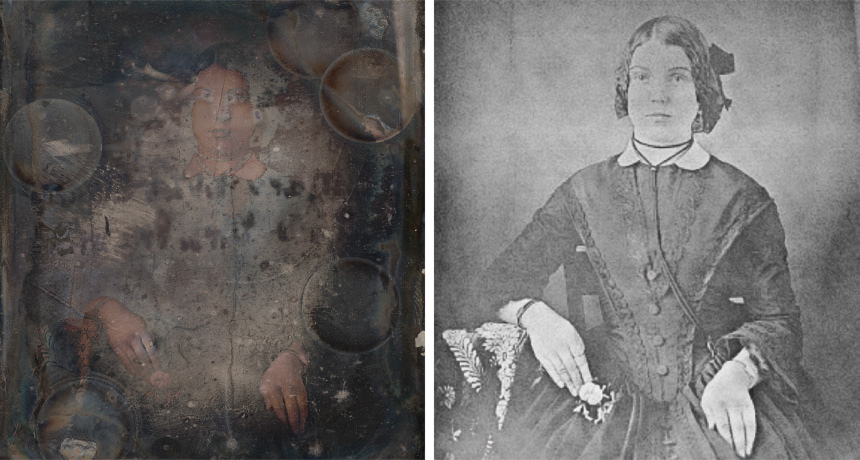How a particle accelerator helped recover tarnished 19th century images
The technique could aid restoration efforts

BIG REVEAL To the naked eye, the woman in the damaged daguerreotype (left) looks ghostly. A synchrotron helped researchers restore her portrait (right).
Left: National Gallery of Canada; Right: M.S. Kozachuk et al/Scientific Reports 2018







